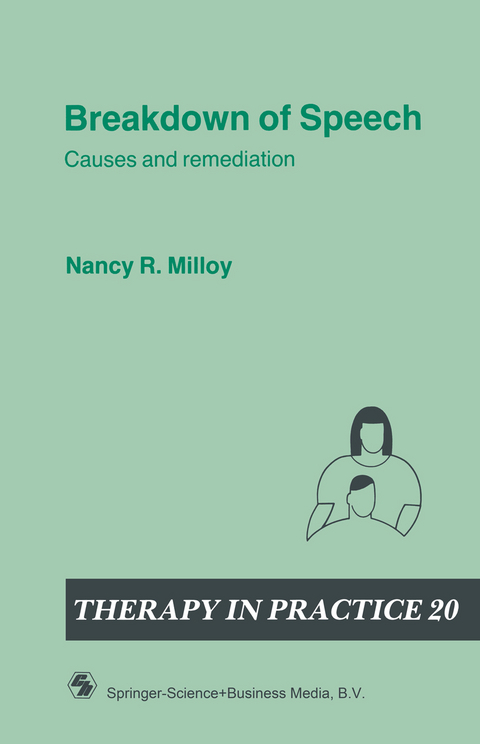
Breakdown of Speech
Chapman and Hall (Verlag)
978-0-412-31550-3 (ISBN)
Be a craftsman in speech, so that thou mayest be strong, for the tongue is a sword, and speech is more valoraus than any fighting. Egyptian Proverb The first duty of a man is to speak; that is his chief business in this world. R. L. Stevensan Memories and Portraits, 1888 Communication is of paramount importance to people. After the 1939-45 war Winston Chur.chill changed from his fighting attitude and advised world planners to adopt 'jaw, nor war'. The present 'glasnost' is also reliant on the power of speech which, when used at its highest level, facilitates understanding. Only human beings possess this power. To illustrate how the acceptance of the automatic nature of speech has come about, consider the following clinical examples. Michael, aged 5;0, is one of identical twins. They have an elder brother of 8;0. Michael has severe cerebral palsy. His brothers are both normal healthy boys. Despite their mother's experience with his brothers, her greatest hope for Michael was to see him walking. However, after recent discussion and consideration of the situation she is now determined to help Michael to learn to communicate by whatever means is avail able to him. She has realized that the essence of a person is in being able to express feelings, desires and opinions as well as in being mobile.
Part 1 Speech v language: working definitions; the vocal tract; the brain; specific characteristics; critical periods of learning. Part 2 Factors which disrupt normal development of speech: genetic conditions - Down's syndrome, other genetic aberrations; structural deviations - cleft palate, other structural anomalies. Part 3 Neurological impairments: developmental dysarthrias - types; dysphagia; feeding techniques; motor schemas; maturation; cerebral palsy. Part 4 Developmental dyspraxias - types: developmental articulatory dyspraxia; immature articulatory dyspraxia. Part 5 Developmental dysfluency: stuttering v dyspraxia; cluttering. Part 6 Developmental voice disorders: due to vocal fold lesions; due to neurological impairment; selective mutism. Part 7 Adult speech: continuing developmental disorders; acquired disorders due to disease or trauma; disorders due to ageing. Part 8 Management of adult speech disorders: normal maintenance; continuing developmental disorders; acquired disorders due to disease or trauma. Part 9 Disorders of resonance: aphonia - current management techniques; disorders associated with ageing. Appendices: basic exercises; space, time and sequencing; oral mechanism and examination; feeding/eating techniques; prosody.
| Erscheint lt. Verlag | 1.1.1991 |
|---|---|
| Reihe/Serie | Therapy in Practice Series |
| Zusatzinfo | XV, 174 p. |
| Verlagsort | London |
| Sprache | englisch |
| Maße | 140 x 216 mm |
| Themenwelt | Medizin / Pharmazie ► Gesundheitsfachberufe ► Logopädie |
| ISBN-10 | 0-412-31550-5 / 0412315505 |
| ISBN-13 | 978-0-412-31550-3 / 9780412315503 |
| Zustand | Neuware |
| Haben Sie eine Frage zum Produkt? |
aus dem Bereich


